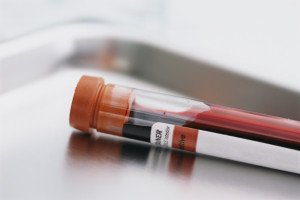Researchers have identified series of blood biomarkers that they believe may help to identify individuals at risk of attempting suicide, but independent experts are cautious about over-interpreting this preliminary study.
 In a study published this week in the journal Molecular Psychiatry, the US researchers said the biomarkers — certain RNA molecules — were found at significantly higher levels in the blood of both bipolar disorder patients with thoughts of suicide as well in a group of people who had committed suicide.
In a study published this week in the journal Molecular Psychiatry, the US researchers said the biomarkers — certain RNA molecules — were found at significantly higher levels in the blood of both bipolar disorder patients with thoughts of suicide as well in a group of people who had committed suicide.
You can read more about the study on the Nature News site.
The authors hope such biomarkers, along with other tools, including neuropsychological tests and socio-demographic checklists, ultimately can help identify people who are at risk, leading to pre-emptive intervention, counselling, and saved lives.
The SMC collected the following expert commentary. Feel free to use these quotes in your reporting.
Prof Martin Kennedy, Director of the Carney Centre for Pharmacogenomics, University of Otago, Christchurch, comments:
“The major risk factor for suicide is presence of a mood disorder such as major depression or bipolar disorder.
“This study sought to find new markers in the blood of bipolar patients that might help predict those at highest risk of suicide. Patterns of genes that were switched on or off in the blood cells of people with suicidal thoughts were examined. These genes were also tested in the blood of a small group of suicide victims, and the level of protein produced by one of these genes differed in the blood of patients at high risk of suicide. When measurement of this protein was combined with some simple psychiatric tests, it helped predict those patients at highest risk of suicidality.
“Overall, this study describes an interesting and quite significant finding that may prove useful in at least two ways. First, it may help guide doctors to decide which patients may be at highest risk of suicide. Second, the study points to possible biological factors that may contribute to suicidal behaviour. The major limitations are that these findings must be regarded as preliminary, and the test will need to be confirmed in independent studies. Even if the test proves valid, however, it may only be applicable to mood disorder patients in hospital settings.”
Our colleagues at the UK SMC also collected the following expert commentary:
Professor Keith Hawton, Director, Centre for Suicide Research, University of Oxford, comments:
“Identifying predictors of suicide is a very difficult task in that predictive power of any factors that have been examined is low in every case, be they biological, social, psychiatric or psychological. The main issue is in terms of positive predictors i.e. the extent to which an individual with a risk factor is actually going to die by suicide. I know of know of no well-powered study where the extent of positive for any factor has been high. Even after attempted suicide (the best predictor), the risk of suicide is only 0.5-3.0 in the following year (the highest risk time).
“The same issues apply to potential biological risk factors. Also, there is a big difference between finding differences between groups (as in this study) compared with risk in actual individuals, the latter being the real test of predictors.
“The size of the suicide study is extremely small (N=9) and even the size of the replication studies for history of suicide attempts is relatively small. Therefore I would say that the findings are of interest and may point the way to some future research based on large samples, but no more than that. I would certainly hope that the media don’t pick this up as a test for suicide, as has happened in the past regarding some brain findings.”
Professor Matthew Hotopf, Professor of General Hospital Psychiatry, Institute of Psychiatry (IOP), King’s College London, said:
“These small sample sizes and biomarker studies – like any other – need external replication, but more than others they need this because the potential list of biomarkers is so huge – much bigger than the number of participants.
“It’s one thing to find a biomarker which might be associated at a statistical level with suicide/suicidal behaviour. It’s quite another to use it to make any kind of prediction which has clinical utility. To do this, one needs very large effect sizes and specificity.
“So these findings may attract media attention, but they are very much preliminary and my money would be on (a) failed replication and even if replication was successful (b) lack of predictive power to be a useful clinical tool.”